

Similar to stainless steel watch band, leather watch straps never go out of fashion. The variety of styles and designs offers something for everyone, from vintage to robust looks. The process that turns animal skins into leather is called tanning, which can be mineral or vegetable, where the former is more robust, while the latter preserves much of its natural characteristics.
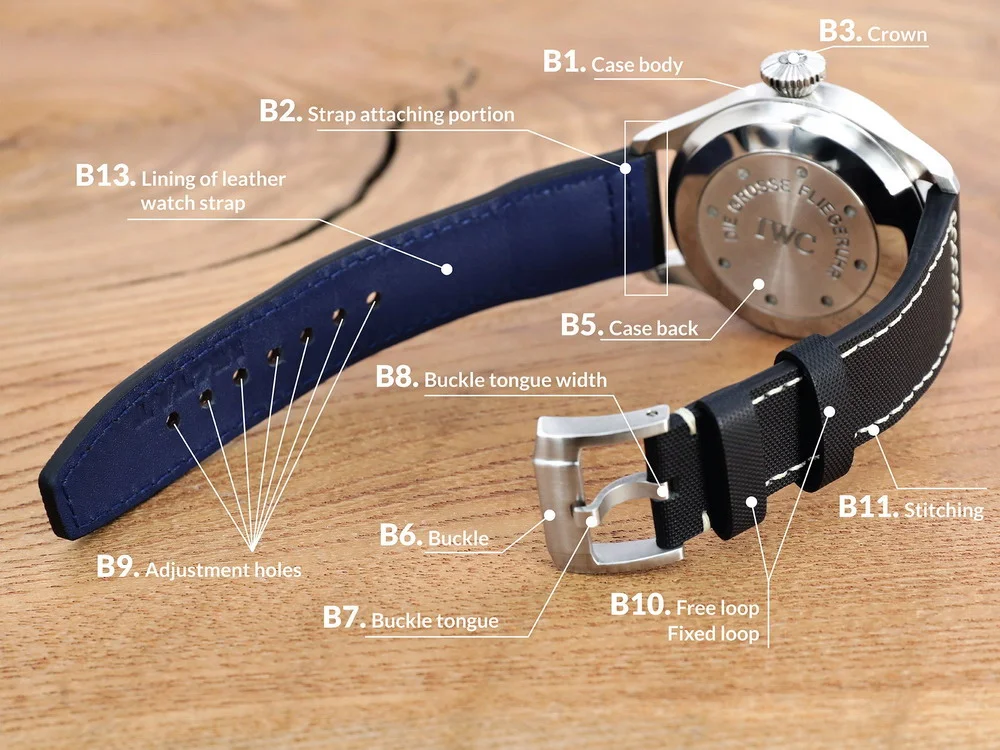
(B1) Case body is a watch case with watch mechanism inside.
(B2) Strap attaching portion is a piece of a watch strap that connects to the case.
(B3) Watch crown is the tool used for adjusting the time. Some watches offer a date window and seconds indicator, which are engaged by pulling the crown out.
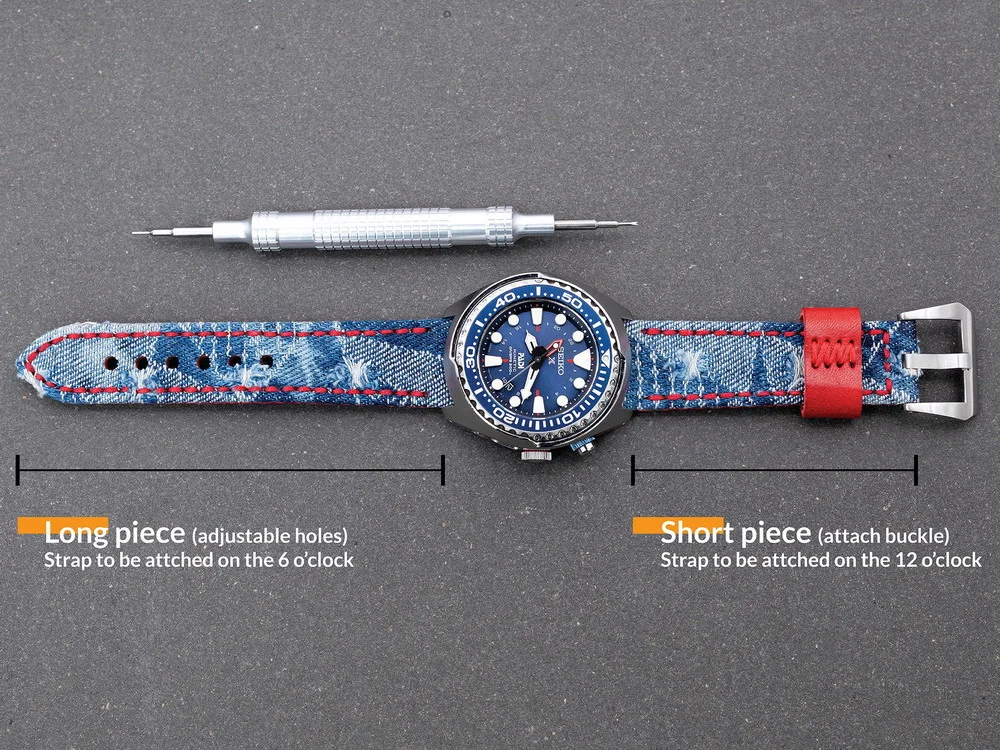
(B4) Watch lug hole is the placeholder for a spring bar that keeps the watch strap securely fit to the case. Have in mind that there are different dimensions of watch lug holes so pay attention on the dimensions of your watch model lug holes when changing a watch band. Also note that there are opened and sealed watch lug holes, so if you have sealed lug holes, it isn't wise using watch bands with metal tube already in the lug (or metal watch bands without access points) because you may have trouble removing them.
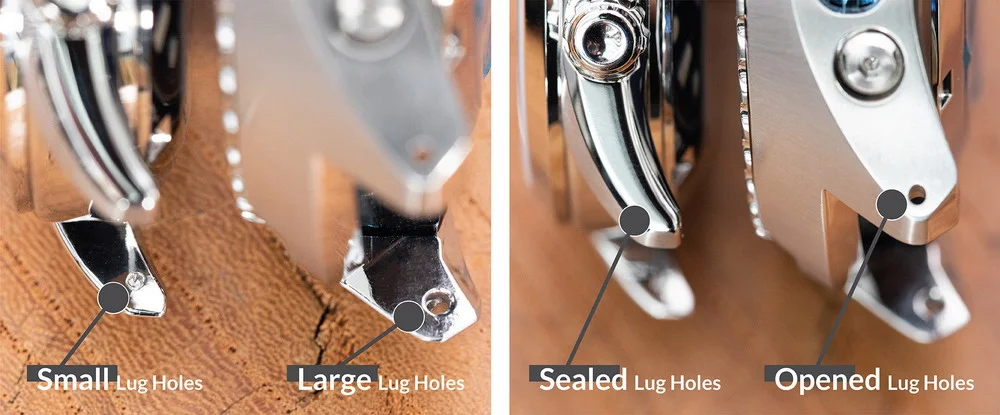
(B5) Case back is the back of a watch that usually is the access to reach the watch movement, it may holds a logo and a model engraved in its cover.
(B6) Watch buckle or watch band buckle serves for keeping the opposite sides of the watch strap securely connected at your wrist. There are different types of buckles, such as folding buckle, deployment buckle / watch band clasp, butterfly deployment clasp, ladder lock buckle, slider buckle, tang buckle and so on.
(B7) Buckle tongue keeps the buckle closed and secures a watch around your wrist.
(B8) Watch buckle tongue width is an opening on a watch strap that needs to fit the buckle tongue. A thing to mind when choosing a buckle for your watch strap. The most common leather watch buckle tongue widths are 2mm, 3mm, 4mm and 6 mm.
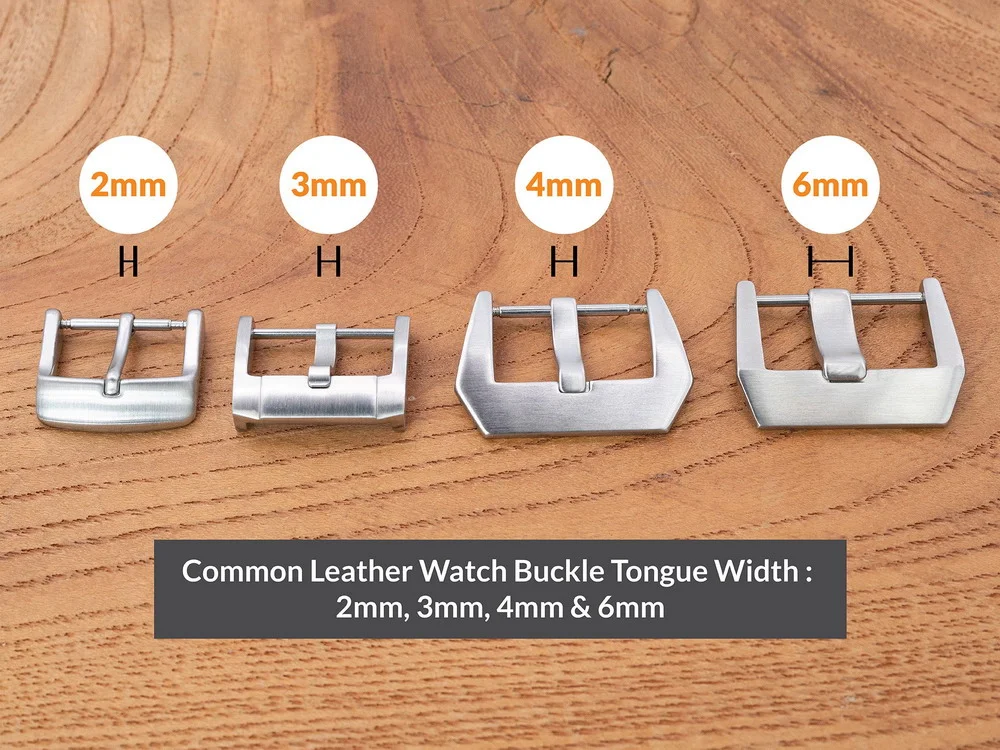
(B9) Buckle Adjustment holes are the holes in the watch strap that serve the purpose of finely adjusting the length to comfortably fit your wrist.
(B10) Fixed loop / free loop or watch strap keeper, as their names say, free or fixed, depending on the watch strap and can come individually or in pairs. Fixed loop means that the loop is fixed to the band and can hold the excess portion of a band attached to the 12 o’clock side. Free Loop, on the other hand, isn't fixed to the strap and can move along its length.
(B11) Stitching can be done manually or with machine, hence it's called hand or machine stitching. It can have a functional or a decorative purpose. Wax stitching is usually used in hand stitching and has functional purpose, because waxing makes the regular threads firmer, more water resistant and less stretchy. For example, Hermès uses waxing for both stitching and leather finishes on their leather bags to protect them from humidity and make them last longer.
(B12) Watch strap profile determines the shape of your watch strap. It includes the fit on the watch lug, leather watch strap edge finish and the form of its tail / tip. You can see different profiles on the image below.
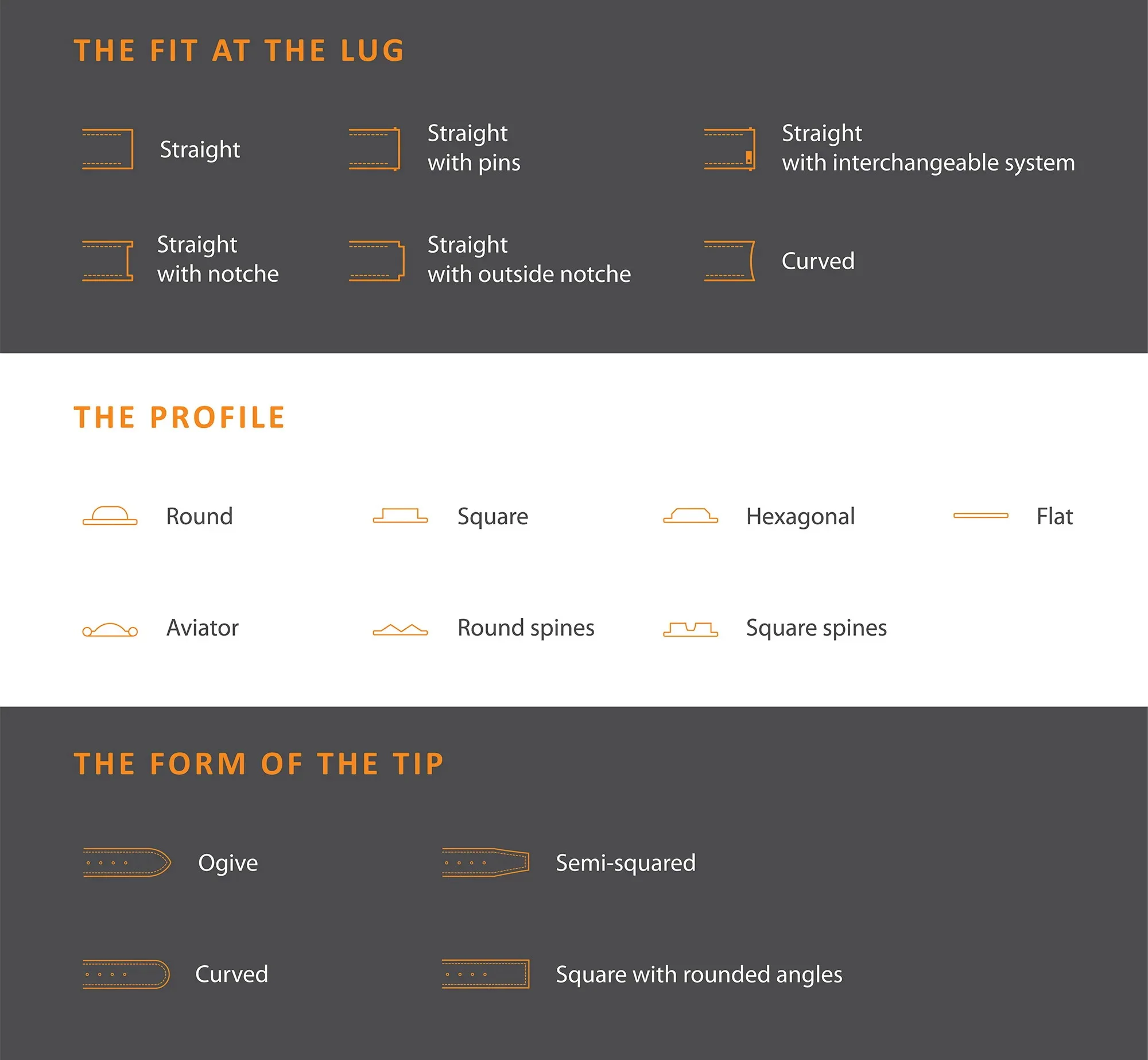
(B13) Lining of leather watch strap is the inner side / back layer of the strap that lies on your wrist. The most common material used for the lining in leather straps is natural leather, but it can also be some other material, such as rubber.
If you have any needs, please feel free to contact us and we will be happy to assist you.
